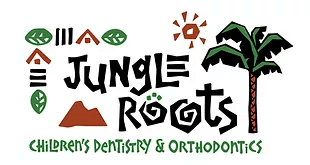As children’s bodies grow and change, it is very hard to juggle every milestone with the next step in preventive dental and oral health care. Most parents may not even think to ask, “When does my child need to visit the orthodontist for the first time?” While braces and orthodontia are often associated with the pre-teen and teenage years, it is recommended that a child’s first orthodontic evaluation is scheduled at the age of 6 or 7. This may seem early, but there is good reason for it.

Early pediatric dental monitoring with Dr. Culp is the first step to identifying issues affecting your child’s dental development. From birth until the age of 10, children are growing in ways that impact the structure of their head and face. They start losing their primary or “baby” teeth and their permanent or “adult” teeth begin growing in around 6 or 7 years old. This includes the appearance of their first set of molars, often called their six-year-old molars. As permanent teeth grow in, an orthodontist can start to detect how your child’s mouth and jaw are forming.
While children complete puberty, their more malleable cartilage converts to the bones that will make up their skull. If a child’s upper teeth are growing in crooked it affects their upper jawbone, and that can affect the formation of other facial structures. This may lead to problems like mouth breathing, poor posture, snoring, and poor sleep as the development of their face and airways are negatively impacted. Since even minor problems can lead to larger issues as a child continues to grow, Dr. Culp and his team will recommend a visit to an orthodontist sooner rather than later. Together, Dr. Culp and the orthodontist will work to make sure your child’s dental development stays on track so that your child’s teeth and smile remain healthy and beautiful for their lifetime.
Another problem that Orthodontists help detect and treat is malocclusion, which is most commonly known as an underbite or overbite. Malocclusion occurs when the lower or upper jaw grows faster than the other. Before a child’s teen years the facial structures are still forming, so guiding that growth and development through early orthodontic treatment reduces the need for more invasive and lengthy orthodontic procedures in the future. Left untreated, malocclusion can cause a variety of dental problems throughout a person’s lifetime.
Early pediatric monitoring can also identify if your child is missing any adult teeth or has deviations from normal tooth eruption which might lead to problems later on. Luckily, all this can be detected and treated with regular check-ups by your pediatric dentist and an early appointment with an orthodontist.
Any of these issues may cause problems with breathing and sleeping or lead to crooked or crowded teeth and, over time, can contribute to more serious dental issues like tooth decay, gum disease, speech or chewing issues, and even headaches and earaches. However, the exciting part is that orthodontic treatment can improve the development of the entire face and nasal airways which prevents and corrects many of these problems.

Some parents wonder how and why orthodontics can help their child before all of their permanent teeth have come in. The goal of early orthodontic treatment is to treat problems that the orthodontist diagnoses, as well as prevent problems from occurring in the future. Most often, early orthodontic treatment works to form the mouth and jaw in a way that allows for adult teeth to grow into it with minimal or no further problems. Each child is unique and will require various amounts of orthodontic work at different times during their life. Early orthodontic work may not rule out the possibility of a child needing braces or other orthodontic work later, but it could ensure that your child has significantly less orthodontic work overall, if treatment is sought early.
What does early treatment look like? While it is different for every child, the most common types of orthodontic treatment between 7 and 10 years of age includes retainers or braces on the front teeth. Space maintainers are used when a child’s x-rays show signs of potential dental crowding, and they can minimize future crowding and crookedness. Sometimes baby teeth are actually larger than the adult teeth that will grow to replace them, so space maintainers take advantage of this to prevent later crowding. Palatal expanders are another form of treatment that can help a child’s jawbone develop and grow correctly. This allows the bones and teeth to grow in correctly, which can sometimes mean avoiding braces altogether. It also improves the formation of the entire face, often aiding with the correct development of the nasal airways and can help correct or prevent problems with breathing, sleeping, and even posture.
For some children, the orthodontist may give them an “all clear” at their initial visit. In this case, it is best to schedule follow-up appointments to check in on your child’s dental growth and development. While your child may not need early treatment, it is important to keep communicating with your orthodontist about the possibility of braces between the ages of 11-14 for crooked teeth or a misaligned bite. Although teenagers and adults can start orthodontic treatment at any time, this age range is usually the best time to begin treatment because nearly all of the adult teeth have grown in at that point.
However, each orthodontist has a different approach and yours may recommend orthodontia earlier than this, depending on the needs of your child. This is especially true given that each child has a different time frame for when their adult teeth will come in. While adults and children in their later teens can also get braces, earlier treatment can help the process of straightening and correcting alignment happen more quickly because as a child ages their teeth and jaw bones become more rigid and set as they approach adulthood. Likewise, treating underbites and overbites sooner rather than later as children grow into adolescence can help minimize the work and time needed to correct the issue.

Most patients wear braces for about two years, often with the aid of rubber bands. These rubber bands come in several different colors which gives kids the opportunity to express themselves by choosing colors they like. Occasionally, braces will require headgear to be worn, but typically that is only worn at night. Depending on the severity of the issue or if the patient received early treatment, the length of time rubber bands or headgear is necessary can be longer or shorter. Nearly all patients who receive braces will continue to wear a retainer after braces are removed. Retainers, which can be removable or fixed in the mouth, prevent teeth from shifting back into their original places. This helps ensure that braces will not be needed again in the future.
There are many reasons children may need to receive orthodontic care and for some, orthodontic care is purely cosmetic. This is still a worthwhile reason to consider bringing your child to the orthodontist. For all people, and especially children, their smile can be a source of insecurity. Braces or other orthodontic care can allow them to feel confident in their smile, encouraging them to smile more! Smiling without hesitation can improve a child’s self-confidence, and it is a legitimate reason to seek orthodontic care. Beyond cosmetic reasons, correct orthodontic care can help jaw issues, bite issues, problems with breathing and sleeping, and crooked or crowded teeth. If these issues go untreated, over time they can lead to more serious dental issues like tooth decay, gum disease, speaking or chewing issues, and even headaches and earaches. Proper dental care is an important part of caring for the health of your child’s whole body.
Your pediatric dentist is a great resource for helping decide when you should seek out an orthodontist for your child. During regular pediatric dental visits, dentists may notice problems with wisdom teeth or with improper alignment or spacing of teeth during routine X-rays. Often this can lead to a referral to an orthodontist, although a referral is not necessary to seek orthodontic care for your child.
Each orthodontist has a different approach, and at Jungle Roots Children’s Dentistry, Dr. Culp will recommend that you and your child work with an orthodontist whose treatment philosophies are in line with his own so that you and your child will continue to have the best dental experience. The orthodontist and Dr. Culp will communicate so that your child’s overall dental care is coordinated and monitored by both parties. Through the developmental checks, by the time your child is ready to start orthodontic treatment you and your child will have formed the same awesome relationship of trust and comfort that you share with Dr. Culp and his team.

As a parent, you always have the choice of how you would like to proceed with your child’s dental health care. As you consider the options, it is important to remember that Dr. Culp’s goal when referring you and your child to an orthodontist is to provide you and your child the best options for maintaining healthy teeth and supporting bones so that your child’s smile is beautiful, functional and will last a lifetime.

At Jungle Roots Children’s Dentistry & Orthodontics, we strive to provide the highest comprehensive pediatric and orthodontic dental care in a unique, fun-filled environment staffed by a team of caring, energetic professionals. We believe the establishment of a “dental home” at an early age is the key to a lifetime of positive visits to the dentist.
